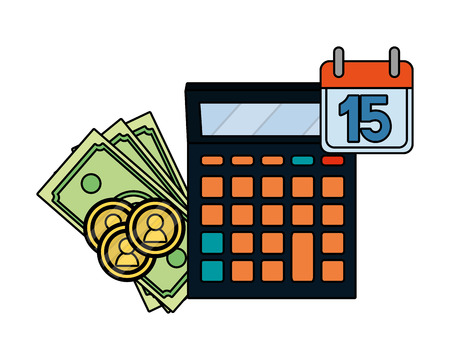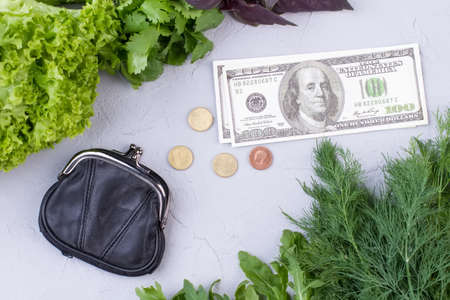1. Understanding the Importance of Tracking
Why Tracking Your Spending Matters
Keeping an eye on your spending is a game-changer for anyone wanting to master their monthly budget. In America, where the average household spends over $5,500 a month according to the Bureau of Labor Statistics, it’s easy to lose track of where your money goes. Without knowing what you spend on groceries, takeout, streaming subscriptions, or impulse Amazon buys, you might be surprised how quickly little expenses add up.
Common Scenarios: How Money Slips Away
Let’s look at some everyday situations:
| Scenario | Monthly Cost (Average) | Annual Impact |
|---|---|---|
| Daily coffee shop visits ($4 per cup) | $120 | $1,440 |
| Streaming services (2-3 subscriptions) | $30-$45 | $360-$540 |
| Weekend dining out (2 times/month) | $100 | $1,200 |
| Impulse online shopping (per month) | $50 | $600 |
These numbers show how regular habits can silently drain your bank account without you realizing it.
The Power of Awareness: Why It Makes a Difference
If you don’t know where your money is going, it’s almost impossible to improve your financial health. According to a 2023 survey by Debt.com, 85% of Americans who actively track their expenses say they feel more in control of their finances. When you track every dollar, you can spot trends and make informed decisions—like cutting back on things you don’t really need so you have more for savings or paying off debt.
What Happens If You Don’t Track?
Without tracking, many people underestimate their spending by as much as 30%. That could mean hundreds of dollars each month unaccounted for. This leads to missed goals—like saving for a vacation, building an emergency fund, or investing for retirement.
2. Choosing the Right Tools and Apps
Keeping track of your spending is a lot easier when you have the right tools at your fingertips. In the U.S., many people rely on a mix of digital apps and traditional methods to help manage their monthly budgets. Let’s review some of the most popular options that Americans use to stay on top of their finances.
Popular Budgeting Apps
Digital apps are a go-to for busy people who want to track their expenses on the go. Here’s a quick comparison of some top choices:
| App Name | Main Features | Best For | Cost |
|---|---|---|---|
| Mint | Automatic bank syncing, bill reminders, budget categories | Beginners & casual budgeters | Free (with ads) |
| You Need a Budget (YNAB) | Proactive planning, zero-based budgeting, goal tracking | Hands-on planners & families | Paid (free trial available) |
| PocketGuard | Simplified dashboard, “In My Pocket” safe-to-spend feature | Simplicity seekers | Free basic version, premium available |
| Goodbudget | Envelope system, manual expense entry, sharing with partners | Cash-based or couples budgeting together | Free basic version, premium available |
| Personal Capital | Spending tracking plus investments overview, net worth calculator | Investors & retirement planners | Free (investment advisory has fees) |
Tried-and-True Methods Still Used Today
If you prefer a more hands-on approach or want to avoid screen time, traditional methods are still reliable:
| Method | Description & Benefits |
|---|---|
| Pencil & Paper Ledger | A classic notebook or ledger lets you write down every purchase. This method gives you total control and awareness over each dollar spent. |
| Envelope System | This involves dividing cash into envelopes labeled by spending category (groceries, gas, entertainment). Once an envelope is empty, no more spending in that category until next month. |
| Spreadsheets (Excel/Google Sheets) | A customizable way to track income and expenses. Free templates are widely available online and can be tailored to fit any lifestyle. |
User Tips: Finding What Works for You
- Mix and match tools: Many people combine apps for daily expense tracking with spreadsheets for monthly reviews.
- Look for automation: Apps that sync with your bank accounts save time and reduce errors.
- Simplicity matters: Choose a system you’ll actually use—complicated tools often get abandoned.
- Cultural fit: In the U.S., mobile-friendly apps are especially popular due to busy lifestyles and widespread smartphone use.
- Privacy check: Make sure any app you use takes data security seriously before linking your financial accounts.
The Bottom Line on Tools & Apps
No matter which method you choose, the key is consistency. By picking tools that fit your habits and lifestyle, you’ll set yourself up for success in tracking your spending month after month.

3. Establishing Daily Tracking Routines
Building strong daily tracking habits is one of the most effective ways to stay on top of your spending and succeed with your monthly budget. Consistent tracking helps you spot patterns, prevent overspending, and make smarter decisions with your money. Here’s how Americans can easily incorporate simple routines into their everyday lives.
Why Track Spending Daily?
Many people check their bank account only once in a while or wait for monthly statements. However, by making tracking a daily habit, you’ll always know where your money is going. This helps you avoid surprises and adjust quickly if you’re spending too much in certain categories.
Simple Daily Tracking Habits
| Habit | Description | Example Tools/Apps |
|---|---|---|
| Set a Daily Reminder | Schedule a time each day (like after dinner) to review your expenses. | Phone calendar, alarm apps |
| Log Purchases Instantly | Add expenses as soon as you spend using your smartphone. | Mint, YNAB, Goodbudget |
| Use Receipts to Stay Accurate | Keep receipts until you log them at the end of the day. | Physical envelope, mobile photo storage |
| Review Your Account Balance | Check balances daily to track spending and catch errors early. | Your bank app or website |
| Track with Family or Roommates | If you share expenses, talk about purchases together every evening. | Shared spreadsheets, group chat reminders |
Tips to Make Tracking Easy and Consistent:
- Pick a specific time: Tie tracking to another daily routine, like brushing your teeth or watching TV at night.
- Go digital: Most banks offer real-time notifications for every transaction—turn these on for instant updates.
- Keep it simple: You don’t need fancy software—a basic notebook or spreadsheet works well too.
- Create visual cues: Place a sticky note on your fridge or set an alert on your phone as a reminder.
- Categorize as you go: Break down spending by type (groceries, gas, dining out) so you can see trends more clearly later.
The key is consistency. By making tracking part of your regular routine, you’ll have better control over your finances and be able to stick to your monthly budget with less stress.
4. Analyzing Spending Patterns
Understanding where your money goes each month is key to successful budgeting. By breaking down your spending into common categories like groceries, dining out, and entertainment—especially as they relate to everyday life in the US—you can spot trends, identify overspending, and make smarter financial decisions.
Why Analyze Your Spending?
Analyzing your spending helps you see not just how much you spend, but also how your habits compare from month to month. For example, you might notice that your dining out expenses spike during busy work weeks or that entertainment costs rise during holidays. Recognizing these patterns can help you adjust your budget or change behaviors before they become problems.
Common US Household Spending Categories
| Category | Typical Examples |
|---|---|
| Groceries | Supermarkets, bulk stores (Costco), local farmers’ markets |
| Dining Out | Restaurants, fast food chains, coffee shops, takeout delivery apps |
| Entertainment | Streaming services (Netflix, Hulu), movie theaters, concerts, sporting events |
How to Track and Interpret Trends
- Collect Monthly Data: Use bank statements or budgeting apps to categorize every purchase.
- Create a Visual Summary: Make simple tables or charts to compare spending across months. Notice spikes or drops in certain categories.
- Ask the Right Questions:
- Are you consistently overspending on dining out?
- Did grocery costs increase due to more home-cooked meals?
- Is there a seasonal pattern in entertainment expenses?
Sample Spending Pattern Table
| Month | Groceries ($) | Dining Out ($) | Entertainment ($) |
|---|---|---|---|
| January | 450 | 200 | 75 |
| February | 425 | 250 | 90 |
| March | 500 | 180 | 120 |
This table shows how your priorities—and costs—can shift over time. If you notice one category growing faster than expected, it’s a signal to review your choices and consider adjustments. By keeping an eye on these trends, you’ll be better equipped to stay within your monthly budget and reach your financial goals.
5. Making Adjustments for Better Budgeting
Why Adjustments Matter
Tracking your spending isn’t just about knowing where your money goes—its about making smart changes based on what you find. Life in the U.S. can be unpredictable: grocery prices go up, rent increases, or you might get hit with an unexpected medical bill. Using your expense data helps you make informed decisions and adapt to whatever comes your way.
How to Use Your Expense Data
Start by reviewing your spending categories from last month. Look for areas where you spent more than planned or where you can cut back. This is the first step toward making changes that help you reach your financial goals, whether thats saving for a vacation, paying down debt, or just covering rising costs.
Sample Monthly Expense Review Table
| Category | Budgeted Amount | Actual Spent | Adjustment Needed? |
|---|---|---|---|
| Groceries | $500 | $575 | Yes – Shop sales, use coupons |
| Utilities | $150 | $130 | No – Under budget |
| Dining Out | $100 | $160 | Yes – Reduce eating out to 1x/week |
| Transportation (Gas/Transit) | $120 | $110 | No – On track |
| Entertainment/Streaming Services | $60 | $80 | Yes – Cancel unused subscriptions |
| Savings/Investments | $200 | $180 | Yes – Set up auto-transfer to savings account |
Tackling Real-Life Budget Challenges
If Costs Go Up:
- Re-balance Your Categories: If groceries or gas get more expensive, look for places to cut back (like dining out or entertainment).
- Prioritize Needs vs. Wants: Make sure essentials are covered before extras.
If You Get a Surprise Bill:
- Create an Emergency Fund: Even $20 a month adds up over time and can cushion sudden expenses.
- Review and Shift Funds: Temporarily reduce non-essential spending (like streaming services) to cover urgent bills.
Setting Goal-Oriented Changes
Your expense tracking gives you the facts—now set new targets based on your current situation and future goals. For example, if you want to save $1,000 by year-end, break it down into monthly savings goals and adjust other categories as needed. Remember, small tweaks each month lead to big results over time!
6. Celebrating Progress and Staying Accountable
Why Celebrate Your Budget Wins?
Tracking your spending can feel like hard work, so it’s important to recognize your achievements along the way. In American culture, small celebrations are not just about having fun—they help keep you motivated for the long haul. Whether you’ve stuck to your grocery budget or avoided impulse buys, celebrating these wins builds positive habits that stick.
Motivating Ways to Reward Yourself
| Win | Simple Celebration Ideas |
|---|---|
| Stayed within dining out budget | Treat yourself to a favorite homemade dessert or host a movie night at home |
| Saved on groceries | Enjoy a coffee from your favorite café or take a relaxing walk in the park |
| No credit card debt this month | Buy a small item on your wishlist or start a new book |
| Added money to savings | Plan a weekend day trip or invite friends over for game night |
Staying Accountable with Smart Strategies
Accountability is key for consistent budgeting success. Here are practical ways Americans often stay on track:
- Share Your Goals: Tell family or friends about your monthly goals—they can cheer you on and check in with you.
- Use Budget Apps: Tools like Mint, YNAB, or EveryDollar send reminders and show real-time progress.
- Join Online Communities: Many Americans join Facebook groups or Reddit threads focused on budgeting. Sharing updates and tips keeps everyone inspired.
- Create Visual Trackers: Use whiteboards, charts, or printable trackers on the fridge to see progress every day.
- Schedule Monthly Check-ins: Set a specific date each month to review your spending and adjust as needed—treat it like an important appointment.
Sample Accountability Tracker Table
| Date Checked In | Main Win This Month | Next Goal | Buddies Notified? |
|---|---|---|---|
| March 1st | $50 saved on groceries | No extra shopping trips next month | Yes – messaged group chat |
| April 1st | No late bill payments | Add $100 to emergency fund | No – will email sister today |
| May 1st | Avoided eating out for two weeks straight | Try meal prepping for lunches all month | Yes – posted in Facebook group |
Your Monthly Motivation Matters!
The journey to financial wellness isn’t just about numbers—it’s about building habits that fit your lifestyle. By mixing celebration with accountability, you’ll find tracking your spending is not only doable but rewarding, too.


